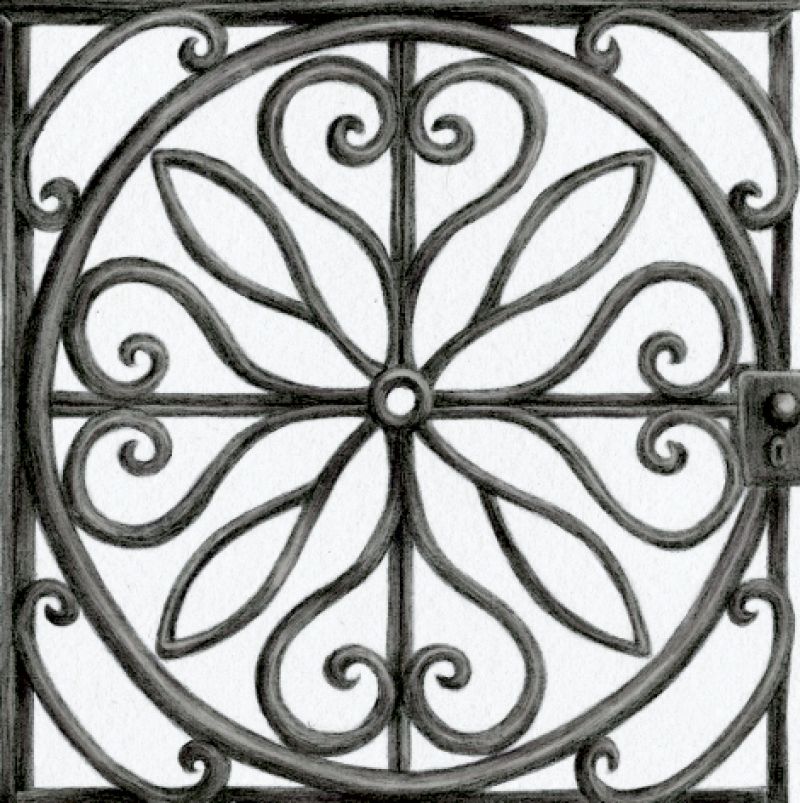
Can you imagine Charleston without ornamental wrought iron? We’d have no graceful gates or elegant window grilles, not even a boot scraper. The city would be less glorious, indeed, had locals embraced the mid-1800s trend toward cheaper cast iron. Luckily, wealthy residents insisted on the real deal, and talented blacksmiths were available to carry out their wishes
Heavy metal: Wrought iron is a tough yet malleable iron alloy that is welded and forged by a blacksmith using an anvil. In earlier centuries, even basic utilitarian objects such as nails, bolts, door hinges, and horseshoes were made of the material.
In defense: Elegant grilles for first-floor windows were made out of wrought iron, as were chevaux-de-frise, lines of sharp spikes on top of fences (such as at the Miles Brewton House at 27 King Street).
Double-edged sword: The Sword Gate at 32 Legare Street is among Charleston’s most well-known works of ornamental ironwork. In 1848, Werner (see top entry) was commissioned to make a “pair” of gates for the City Guard House on Broad Street. He misunderstood and made two sets. One ended up on Legare Street, and the other now forms the pedestrian gate at The Citadel’s main entrance.
The Old Guard: In the 1800s, Charleston’s top three ironworkers were immigrants from Germany: Johann August Wilhelm (J.A.W.) Justi (1817-1895), Christopher Werner (1805-1875), and Frederic Julius Ortmann (1839-1899).
Color Ways: Almost all ornamental ironwork today is black or “Charleston green.” But in the 19th century, it was often painted in bright, vivid colors. The balcony Werner created for the Adam-style Nathaniel Russell House at 51 Meeting Street with the initials “N.R.” in the scrollwork was originally painted white.
Iron Man:The craft was carried on in the 20th century by Charleston’s best-known and most prolific blacksmith, Philip Simmons (1912-2009), a Lowcountry-born African-American whose numerous works of decorative wrought iron include the snake gate at the Christopher Gadsden House, 329 East Bay Street, memorializing Gadsden’s famous “Don’t Tread on Me” flag of the American Revolution.
Give ‘em the Boot: You can still spot boot scrapers outside the front doors of numerous downtown homes. Designed in a variety of shapes and figural motifs, these were necessary items before Charleston streets were paved.
Sneak a Peak: Ironwork is often seen in the fences and gates leading into Charleston’s walled gardens. You’ll also notice a style of ornamental grille set into a wall—known as a clairvoyée, it was designed to allow passersby a view into the garden.